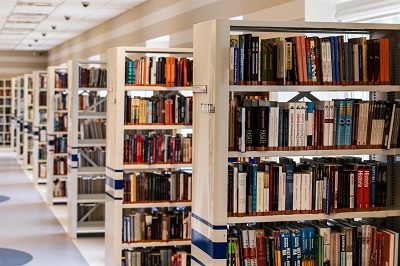5 IoT solutions for modifying school and college learning processes

Is it any surprise that the phenomenal advances in technology witnessed in recent years are changing the way in which we educate, both at school and college level?
Artificial intelligence (AI), machine learning (ML) and the Internet of Things (IoT) are all buzzwords which have moved out of tech circles and into the mainstream, and the education sector is being revolutionised by these new solutions to age-old learning challenges, says Aimee Laurence freelancer editor at Essayroo.
The IoT in particular is facilitating whole-scale changes in the way that education is delivered, right at the heart of the matter too, in terms of learning processes. Here are five IoT solutions that are making their mark.
Communication
Unsurprisingly, technological advances are threatening to fundamentally change the way in which all the educational stakeholders communicate among themselves. Teachers and other purveyors of learning are now able to communicate with their students in an incredible number of ways which facilitates the learning process, and has made it both remote, and without time restrictions.
“Specifically, IoT technology is mimicking real-life interactions that perhaps communication devices couldn’t manage even a short time ago. Devices such as digital pens and interactive whiteboards, freely available with the IoT, are making remote learning practices convenient, simple to use, and every bit as effective as the traditional classroom method. But that method is changing too thanks to all these advances in communication,” says Adela Curtis, a tech writer at PaperFellows and BoomEssays.
Textbooks
There are two distinct ways in which the IoT is changing the face of that old educational staple: the beloved textbook. First of all, huge quantities of information – libraries worth – are now accessible and storable on portable devices, making physical libraries somewhat antiquated in a sense of being a place that stores books.

Nowadays, it’s possible for students to scan QR codes which instantly give them the access to a digital version of the book they require right there ion their tablet, or portable device.
Secondly, digital textbooks are so much more interactive that their older relatives, with audio, moving visuals, and interactive tests and activities now all part of the picture. This is a significant development in terms of the fundamental learning process, and promises to include students who didn’t respond well to the classical teaching methods of present and regurgitate.
Sharpening student focus
As unlikely as it may sound, it is now possible to track the attention that students are giving to a certain class through IoT-connected wearables. These wearables measure the vitals of a student in order to interpret energy, focus and concentration levels. Not only can teachers react in-class by changing the activity in order to stimulate students who are lagging, but schools and colleges can design nutrition programs which better facilitate learning based on the data that is collected. This is truly the future playing out in the present.
“An additional development of this unlikely-sounding technology is that learning centres can track stress levels of students, and make early interventions in terms of students that are buckling under pressure. This promises to change student wellbeing forever, and is truly learning with the student front and centre,” says Chase McCarthy, an educator at OXEssays and Assignment Writing Service.
‘Anywhere’ learning
This is closely linked to communication and textbook advances, because the result is that students can now effectively learn from anywhere. Not only does this promise to bring educational standards in-line in all geographical locations, but can better integrate students with disabilities, those who live in remote areas, of those who are homeschooled. Access is a key consideration here, and promises to take the very best educations out of the hands of the very privileged few, and deliver it to the masses. Not so long ago that may have sounded like a pipedream, but it is quickly becoming reality.

Aimee Laurence
Interactive devices
This is another topic that was previously touched upon, but interactive whitebeards, tablets, digital pens, collaborative software, and all other sorts of interactive devices are not streaming into the classroom at breakneck speed.
What’s more, the students and teachers are so much better placed to utilise these tools because they are both increasingly coming from generations who feel comfortable and confident using technology, especially as baby-boomer teachers continue to retire.
Videos, podcasts, digital presentations…it’s all happening in the classroom as much as it is happening in the workplace. Once again, the IoT is facilitating this rapid change.
The author is Aimee Laurence freelancer editor at Essayroo
About the author
Edtech journalist Aimee Laurence can be found at Academic Writing Service and Essay Services. As well as keeping up to date with what’s new on the tech front, Aimee freelances as an editor at Essayroo.
Comment on this article below or via Twitter:
Recent Posts
- What Is an Exoskeleton Suit?
- Where can you use an ultrasonic motor?
- Smart Camera: System That You Can Use for a Wide Variety of Purposes
- Why Is the Smart Toothbrush Better Than a Regular One?
- Microcontrollers: An Integral Part of Embedded Hardware
- Air Quality Monitoring System: Why It’s So Important in Modern Realities

